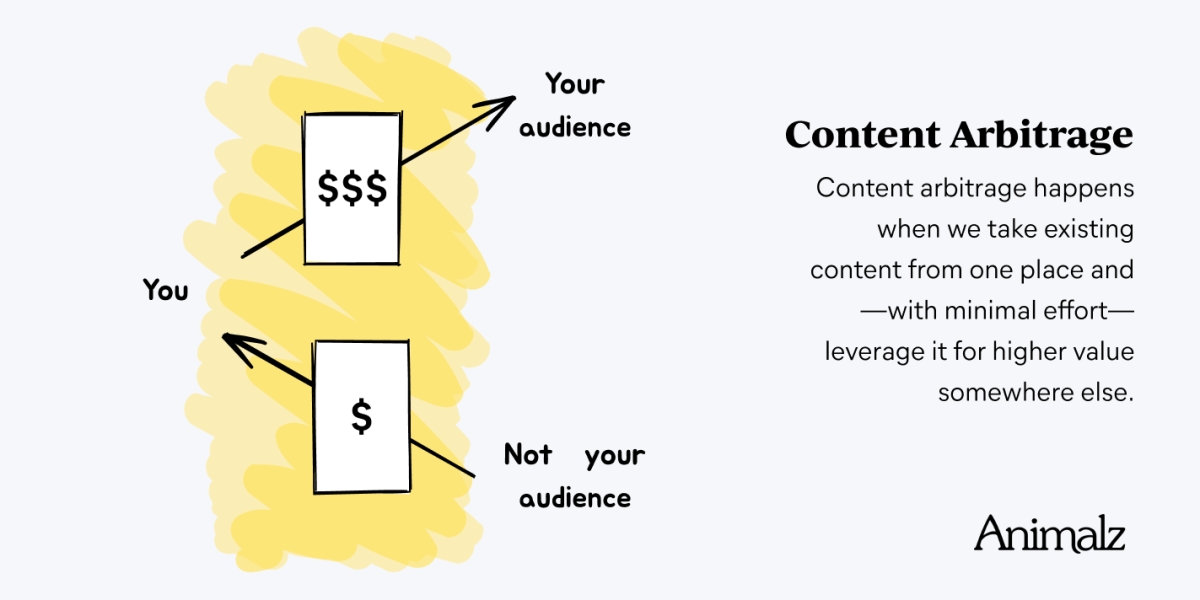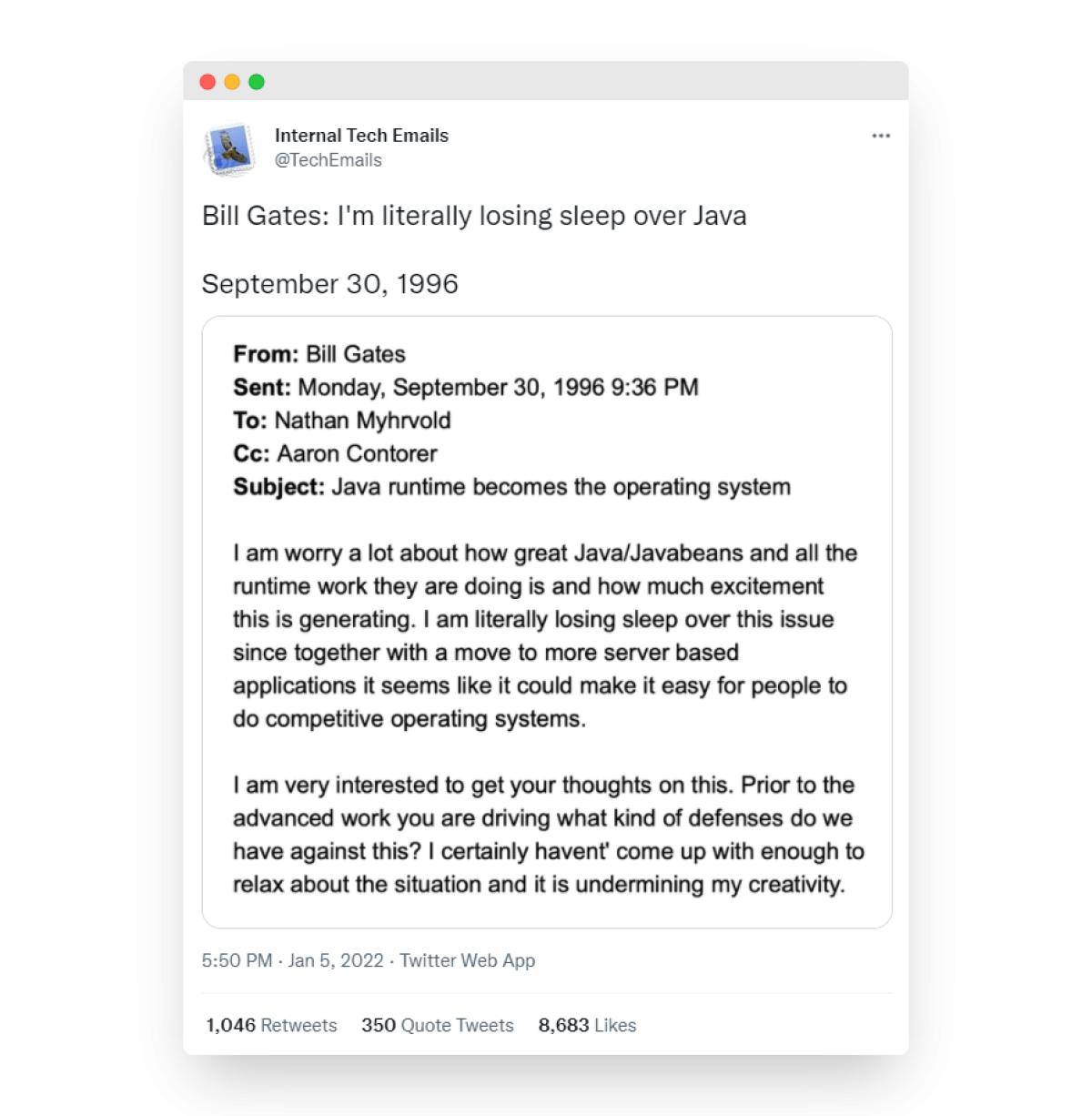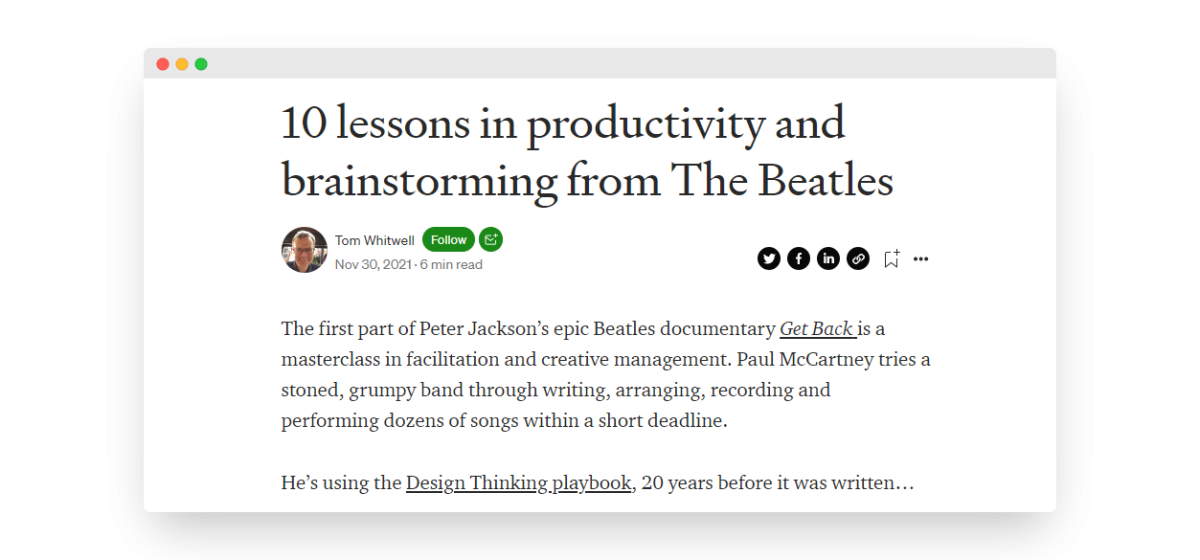The core risk of content marketing is creating something that nobody cares about. You pour time and energy into a topic that your audience ignores. You focus on the wrong angle. You take a bet, and for whatever reason, it doesn’t pay off.
One way to tackle this problem—to reduce the time it takes to create content, and to increase the likelihood of its success—is to use content arbitrage.
Content Arbitrage
You’ve probably heard of arbitrage. It’s the purchase of something in one market at a low price and the reselling of it in another market at a higher price. Think the near-instantaneous buying and reselling of financial assets to capitalize on tiny differences in price between markets, or more tangibly, thrift-shop clothes bought for cents and sold for tens of dollars through vintage marketplaces.
Arbitrage is based on the idea that the same “thing”—financial assets or vintage clothes—can have different prices in different contexts. If you’re smart enough to see an arbitrage opportunity, you can make money in short order.
The same idea can be applied in content marketing. Content also has a different value in different contexts:
An idea that is commonplace to one audience—say, finance professionals—can be novel and interesting to another—like marketers.
The same core information can be made more or less valuable by changing its format. Great ideas are sometimes locked away in places that render them inaccessible to people that would benefit from them.
Content arbitrage happens when we take this existing content from one place and—with minimal effort—leverage it for higher value somewhere else.

How to Find Arbitrage Opportunities
Content arbitrage exists wherever information asymmetries exist: instances where one group of people possess information that would be useful to another, but—for reasons we’re about to explore—it’s rendered inaccessible. Content arbitrage happens when you make it accessible.
In finance, arbitrage opportunities are short-lived: once a price discrepancy is revealed and somebody makes a quick buck, the market corrects, and the opportunity disappears. It’s tempting to think of these arbitrageurs as pure middlemen, creating little in the way of lasting value.
For content arbitrage, we have to walk a fine line. We want our content to be long-lived, to add value above and beyond the raw information source, to ensure that value endures, and to connect it back to our business and bottom line. We also want to create that value quickly and efficiently, piggybacking off of proven ideas and the effort of others to create something new and interesting.
Here are three ways to reconcile those goals and add value through your arbitrage:

1. Curate Fragmented Information
Sometimes useful information is spread out across lots of places. Business memos are a great example: many of the world’s most successful companies routinely share insights into their performance and strategy, but it’s hard to learn from their experience and identify core themes because these memos are scattered across thousands of company blogs and press releases.
This opportunity lends itself to the purest (and weakest) form of arbitrage: curation, finding fragmented information sources and bringing them together in one place, like Sriram Krishnan’s collection of business memos, the Internal Tech Emails Twitter account, or AdEspresso’s real estate Facebook ads.

Content from other sources—like famous tech companies—is being leveraged by other people to create new value for a different audience. It works because Sriram, Internal Tech Emails and AdEspresso have expended just enough effort to add value beyond the original sources:
They curated information with clear relevance to their audience (and their problems)
They focused on topics that hadn’t been curated to death
They added a differentiator—a different selection methodology or a strong opinion (FAANG companies, emails vs. memos, etc.)
Listicles are the canonical example of this type of content arbitrage. Ten years ago, the web was significantly more fragmented than it is today, with many great ideas hidden away in obscure corners of the internet, like personal blogs and essays. Listicle content—Ten Top Marketers to Follow, and so on— helped alleviate this accessibility issue, creating value through centralization.
But that value is short-lived: there are no barriers to entry, and anyone can curate a competing resource. Today, unless you operate in an industry with low content maturity, it’s hard to add lasting value through curation alone.
2. Summarise and Repurpose Information into New Formats
Great ideas can stare you in the face but never be realized because they’re locked up in the wrong format. Useful information exists in long meandering books that few people are willing to read. Many people prefer the immediacy of written information over the long-form nature of video.
Here, there is format arbitrage waiting to be realized: repurposing useful information from one inaccessible format into another more accessible one.
This article turns an hours-long documentary about the Beatles’ creative process into a five-minute blog post. This article from CB Insights summarizes the contents of dozens of company memos.

In both cases, there is relatively little value-add beyond the original source (in fact, there is lots of information lost). But for somebody that will never watch the film or read a hundred memos, every idea that is shared is novel, interesting, and valuable. Arbitrage from one format to another unlocks a new potential audience and creates genuine value in the process.
Crucially, good summaries have a more defensible moat than simple curation because there is a time cost involved in their creation: you have to actually watch the webinar, read the book, listen to the podcast.
3. Translate Esoteric Ideas into Your Industry’s “Language”
Useful ideas and information are often locked away in niche or esoteric publications, like industry trade journals or academic papers. By wandering into new spaces where you don’t “belong,” you can often find heaps of information worth bringing back to your discipline.
(The inverse point is also worth considering: as a content marketer, there are no arbitrage opportunities to be found in content marketing blogs. The blogger that limits their reading to HubSpot and Neil Patel is unlikely to find new, interesting information to arbitrage—because every other content marketer is also staring at those same publications.)
The article you’re currently reading is an example of content arbitrage in action: “arbitrage” is a run-of-the-mill concept from finance, but applied into the domain of content marketing, it becomes (I hope) interesting and helpful. This Product Habits article uses Domino’s Pizza to highlight startup growth advice. This Zendesk article takes financial advice from Warren Buffet and shows how it applies in sales; this Chorus article does the same for The Office.

This is the strongest form of arbitrage: translation, taking ideas from other disciplines and showing how they apply to you and your audience. The moat is strongest here because this process is difficult: it requires synthesis of the information and careful thought about how it might (or might not) apply in your world.
And although it requires more effort than simple curation, it’s still arbitrage in the sense that the core idea—the framework, the research, the anecdote, or experience—remains unchanged. We are still piggybacking the successful, proven, interesting ideas of others.
New vs. New to You
Great content marketers know that they don’t always have to reinvent the wheel. The world is full of interesting ideas, frameworks, data points, and stories. With a bit of thought, real, lasting value can be created from this existing content—without risking time and energy in the creation of something completely new and completely unproven.
Content arbitrage is perfectly suited to a world drowning in information. With millions of articles published every day, it makes perfect sense to use existing information to create new value. Not everything has to be new—it just has to be new to you, and your readers.
